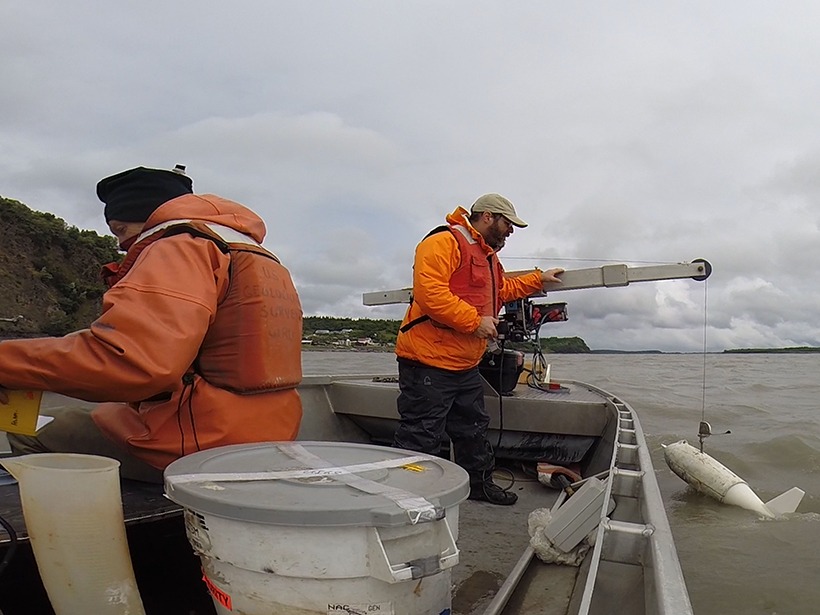Source: Water Resources Research
Arctic rivers like the Mackenzie transport vast amounts of freshwater to the sea. The rivers swell and diminish as glacial ice melts and freezes, changing ocean currents and altering Earth’s climate. Yet rugged conditions can make it difficult to directly measure the discharge of remote rivers such as these—a major research gap. A new study proposes a novel approach to gauging river flow based on the microbes in the water.
Bacterial strains wax and wane as river conditions change. In the Ganges Delta, for example, the cholera microbe Vibrio cholerae causes a regular outbreak of diarrheal disease after the monsoon season. In rivers such as the Thames and the Danube, scientists have found that the abundance of different microbes depends on a river’s length and the size of its watershed. Given these patterns, Good et al. wondered whether they could use the relative abundance of microbes to predict how high a river was running when a water sample was collected.
The team turned to six Arctic rivers—the Yukon, Kolyma, Yenisey, Mackenzie, Lena, and Ob—and extracted bacterial DNA from water samples collected at the rivers’ mouths. These were collected as part of the Pan-Arctic River Transport of Nutrients, Organic Matter, and Suspended Sediments project, which tracked river water chemistry to study how climate change is affecting glacial runoff. To determine what microbes thrived in each river, the researchers looked at a segment of the bacterial genetic code called the 16S rRNA gene. Although this segment is found in all bacteria, it contains minor variations that can be used to classify different strains, described as operational taxonomic units (OTUs). Overall, the team found 148 OTUs, nine of which were present in at least five of the six rivers.

The team next developed machine learning algorithms similar to those used in face detection technology to predict each river’s flow on the basis of the relative abundance of the nine types of waterborne bacteria. The researchers trained the algorithms with 33 years of actual discharge measurements from the six rivers. The computer algorithm was roughly 20% more accurate than traditional hydrologic models based on watershed area, the team reports. Scientists don’t fully understand how a river’s flow affects its microbial community, but the finding could help scientists estimate the flow of other ungauged rivers. (Water Resources Research, https://doi.org/10.1002/2017WR021974, 2018)
—Emily Underwood, Freelance Writer
Citation:
Underwood, E. (2018), Using microbes to predict the flow of Arctic rivers, Eos, 99, https://doi.org/10.1029/2018EO097801. Published on 15 May 2018.
Text © 2018. The authors. CC BY-NC-ND 3.0
Except where otherwise noted, images are subject to copyright. Any reuse without express permission from the copyright owner is prohibited.

